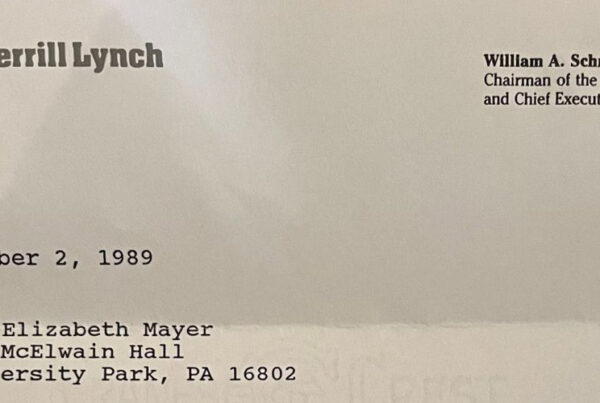
Article Summary: [Part 1 of 2] With the constant daily bombardment of advertising messages, your words have to grab your reader’s attention and get him or her to act. With email, words are everything. Mark Twain wrote, “The difference between the right word and the almost right word is the difference between lightning and the lightning bug.” Here are five suggestions to improve your emails across your entire sales and communication processes.
Avoid Foot in Mouse Syndrome: Write Emails that Generate Results (Part 1)
Copyright © 2010. The Chief Storyteller®, LLC. and ThinkBusiness Magazine
Ira J. Koretsky
June 2010
[This is the first in a two-part series. Part 2 is Special Delivery: Write Emails Audiences Will Open
When I commute, I pay attention to commercials. I particularly look at and listen for word selection and word order. Whether on a billboard, a radio commercial, or a magazine ad, advertisers vie for our attention. We face the same challenge with our emails.
The reality is we can not read every email upon receipt. How then do we get the recipient to say, “I need to read this email now?” A properly worded email provides enticing information that generates immediate action.
This article is about improving your emails across the entire sales and engagement process. What you say depends upon a variety of factors such as urgency, deadline, and pain points. As such, use the suggestions below as they apply appropriately to each phase in your sales and engagement processes.
Mark Twain wrote, “The difference between the right word and the almost right word is the difference between lightning and the lightning bug.” With email, words are everything. Here are five suggestions for sending emails that generate results.
The difference between the right word and the almost right word is the difference between lightning and the lightning bug. – Mark Twain
1. Personalize Your Message
I receive “Dear Ms. Koretsky” and “To Whom It May Concern” emails too often. Without fail, they are templates and they get deleted. Now imagine looking at the thousands of emails you received last year. You would discover that most of the first-time sales emails you received are, “one size fits all.”
Stephen Covey’s habit number five says it best, “Seek first to understand then to be understood.”
Instead, conduct some research to show your level of commitment to building a relationship. Whether the research is a little or a lot, ensure your email clearly demonstrates how your product or service is helping the prospective organization without it reading like a template.
2. Keep it Smart Device-Friendly
If you are like most smart phone users, you skip the long emails and promise yourself you will read them later. Unless it is really important, that email goes to the bottom of the queue. Be realistic. What do you think happens to long sales emails, especially from an unknown or little known sender? I challenge even the best graduates from the Evelyn Wood Speed Reading Course to read every email.
As such, write emails as if they will be read on a smart device. Smart device-friendly email is less than 100 words and takes 10 to 15 seconds to read. Need to send a lengthy email? Break it into two-parts. The first part should be mobile-friendly, summarizing your key points. The second part offers the details and goes below your signature line. For example, I write in proposal emails, “Find below the signature, the detailed version of the proposal.”
3. Write like a Copywriter
Many sales and engagement emails are heavy on features and light on benefits. Often, these scarce benefits are hidden in the text, akin to buried treasure. Instead of making the reader become a business pirate in search of your buried treasure, write your emails like a copywriter. Great ads have one common element—a compelling headline. The analogous email element is the subject line.
You want your subject line to scream, “Read Me!” It is a short space, so grab the heart first, then the brain. Make your headlines personal and offer a benefit. Prove to the reader it will be worth their time. Keep your headlines between seven and 10 words.
Many people scan emails. So make the key points impossible to miss like billboards on a trip through your email. Bulleted statements are a great way to highlight key areas.
4. Include a Clear Call-to-Action
Every email should move the audience forward in your sales and engagement cycle. It is, therefore, critical to have a call-to-action in every email. Be obvious and specific with your request. Put it on its own line with a specific date and time. If you would like the prospect to act, an example might be “Please forward your comments on the pricing to me by 5 p.m. on Friday.” If you are the one completing an action, an example might be “I will follow up with you on Thursday next week to get your thoughts.”
5. Measure Twice, Cut Once
When I was a child, some of our family gatherings centered on construction projects for our relatives—patios, porches, you name it. As the children got older, we were put to work. While working, the adults shared lessons with us. Uncle Mike taught us the importance of measuring before cutting. “Once you cut, you can’t go back. So always, measure twice, and cut once,” he would say.
Let’s take Uncle Mike’s advice to sales and outreach. It is critical for you to measure the success of your emails. Identify what is working well and what is not. Subsequently, tweak or revise your messages to ensure you are generating the results you want.
Ask yourself key measurement questions such as:
- Are the emails helping to move my audience along our sales/outreach process?
- What messages are triggering positive responses?
- Are they asking the kind of questions I would expect?
With the constant daily bombardment of advertising messages, your words have to grab your reader’s attention and get him or her to act. It is easy and quick for us to use standard template language. Be different. Demonstrate you did you homework with your research. Set yourself apart with personalized messages that are simple and obvious.
Heed Benjamin Franklin’s advice of, “by failing to prepare, you are preparing to fail.” Use email as an effective engagement tool and it will help grow your organization.
Contact us to learn more about improving your success with email, website, and other outreach engagement communication. Ask about our communication, public speaking, and storytelling keynotes, workshops, coaching, and services.
Read More ThinkBusiness Articles
- When Nobody is Looking, Character Still Counts – Make Your Business Stories Credible (read)
- Shoulda, Woulda, Coulda – 5 Activities You Really Should Do (read)
- Business is Personal – 3 Tips to Accelerate Relationship Building with Small Talk (read)
- Make Networking Pay Off – How to Find the Right Events for You (read)
- The Art of Listening – 5 Ways Active Listening Improves Your Sales Success (read)
- Before You Make that Call – Use Research to Stand Out from Your Competition (read)
- Treat Everyone Like a Key Decision Maker – How Improvisational Humor Training Helps You Sell (read)
- Avoid Foot in Mouse Syndrome: Write Emails that Generate Results, Part 1 (this article)
- Special Delivery: How to Write Emails Audiences Will Open, Part 2 (read)
- Networking as a Sales Tool – 5 Sure-Fire Steps to Increase Sales Success (read)
- Thinking of Going Global? Use Social Media to Accelerate Your International Success (read)
- Better Blogging for Better Results – 8 Tips to Generate Opportunities from Blogging (read)
- The “What Do You Do?” Answer – A Key Tool in Your Sales Toolbox (read)
- Business is Personal – 3 Tips to Build Rapport in Sales Meetings (read)
- It’s Who Knows You – 3 Little Known Ways to Turn LinkedIn into a More Valuable Tool (read)
- Keep Your Top Customers Forever with Internal Champions, Part 1 (read)
- Keep Your Top Customers Forever with Internal Champions, Part 2 (read)
- Life Lessons – Everything I Learned About Sales, I Learned From My Parents (read)
Updated Content 2012, Updated header photograph 2019
Photography Source: DepositPhotos



